Mossberg 500 vs 590: Mossberg Pump Action Showdown!
Mossberg is one of the oldest, family-run businesses out there. If you go to SHOT Show and check out the Mossberg booth, you’ll likely run into a member of the Mossberg family. Mossberg has had several notable weapons throughout their history, and this includes pistols, rifles, and, of course, shotguns. Ever since the 1960s, Mossberg has been a ‘shotgun’ company.
That doesn’t mean they don’t produce other weapons. In fact, they have a rather nice lineup of rifles and handguns. However, Mossberg’s bread and butter are scatterguns. Their flagship shotgun is the Mossberg 500 and its many derivatives. Today we are talking all about the Mossberg 500 and its most famous derivative, the Mossberg 590. Specifically, we are going to compare and contrast the two guns and help you make the best decision when choosing a pump-action shotgun.
The History of the Mossberg 500
Like most modern shotguns, the layout of the Mossberg 500 really owes itself to the Model 12. It’s your typical American pump-action shotgun. The major difference comes from the use of an aluminum receiver, which cuts weight and cost significantly. The weapon also uses a unique tang safety at the rear of the receiver. Mossberg initially introduced the weapon in 1961 as a competitor to the famed Remington 870.
The weapon’s low cost but a high level of quality made it an instant hit. While they aimed the initial design at hunters and sportsmen, the Mossberg 500 series quickly grew to be appreciated by police agencies. Namely, because it was cheaper than the competition but highly reliable. In 1970, Remington’s patent on dual action bars expired, and the Mossberg 500 became the shotgun we know and love now.
Check out our full Mossberg 500 review.
Mossberg 500 Variants
There are many different variants of the Mossberg 500 in .410, 20 and 12 Gauge. Some include different camo patterns, barrel lengths, or various stock set ups.
The History of the Mossberg 590
Also, in the 1970s, the US Military was looking for a new shotgun. They designed their gun for the rough conditions hunters embraced, from swampy marshes to brutal thickets. Those same conditions were common enough with soldiers that the 500 seemed like a simple transition. Mossberg jumped at the opportunity. However, they met with a brick wall known as the MIL-SPEC 3443E. This protocol was quite specific.
This wasn’t just the torture test of 3,000 rounds of full-powered buckshot. This was a specific protocol that called for a number of features. The original Mossberg 500s lacked a few of these features. This includes a metal trigger guard. Mossberg embraced polymer early, and this helped keep their prices low. The Mossberg 500 also lacked an ‘easy access’ magazine tube for easy maintenance and cleaning.
Mossberg still wanted that fat military contract, so they went back to the drafting board and moved things around. They started making changes to the design and added an aluminum trigger group and a new magazine cap and barrel design that allows easier access to the internals of the gun. This became the 500MILS.
Eventually, Mossberg decided to separate the two firearms into new model numbers. The 500 stuck to the standard design, while the 590 series adopted Mossberg’s military changes. That’s how we got the many Mossbergs.
Mossberg 590 Variants
All of the Mossberg 590 variants are oriented towards tactical usage. Outside of the 590 they offer a 590M that is magazine fed, 509S and the MIL-SPEC 590A1.
Spec Comparison
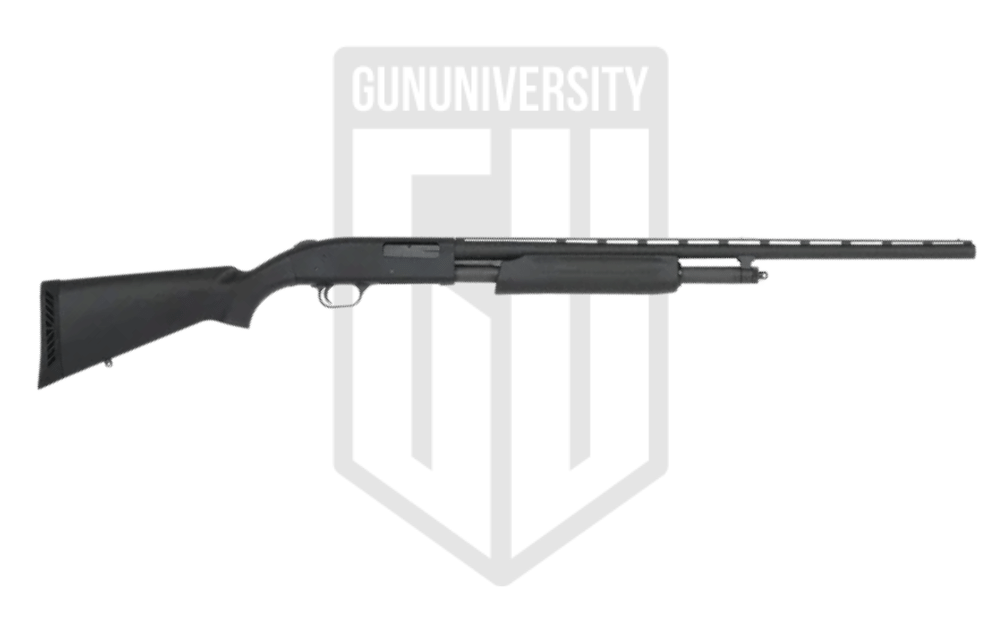
Mossberg 500
- Final Grade : A
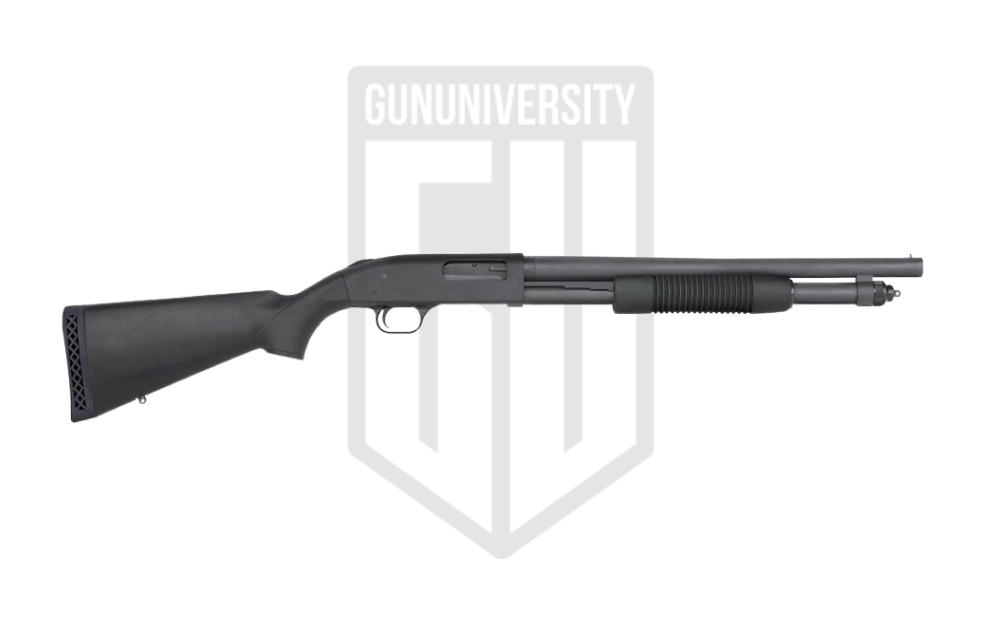
Mossberg 590
- Final Grade : B+
What They Have In Common
Both of these designs are pump action shotguns with tang safeties, dual action bars, and tubular magazines with similar ergonomics. Mossberg taps the receivers to make them optics-ready. They are both very similar at first glance.
Mossberg produces a wide variety of guns and calibers for each shotgun. Until recently, the 590 series were all 12 gauge, but Mossberg embraced both 20 gauge and .410 variants of the 590 series. The Mossberg 500 also embraces the three major shotgun chamberings. Modern Mossberg 500s and 590s can chamber up to a 3-inch shell.
Their guns both share a modular design and can accept the same furniture. Stocks and pumps that work on a 500 will work on a 590. The core receivers are somewhat identical. The popularity of these guns has produced a massive aftermarket that has generated a ton of accessories ready to outfit your shotgun.
The military 590 demanded an aluminum trigger guard, but the civilian variants will still feature the polymer trigger guard, just like the 500 series.
Both guns have models that can accept chokes. Chokes used to be the domain of the sporting-oriented Mossberg 500, but they have made their way to the 590 series as well.
The Main Differences
The Magazine Tube – As mentioned, the 590 series has a blow-out magazine tube that is easily removable for cleaning. This magazine design allows the user to remove the cap and add an extension to the gun to hold a few extra rounds. On Mossberg 590 models with bayonet lugs, it also serves as a mounting point for the ring of a bayonet.
Bayonet Mount – Oh yeah, the 590 shotguns also have a bayonet lug, because why not? The bayonet lug fits standard Ontario USMC Bayonets and the Army’s old M7 bayonet. To be completely fair, bayonets on shotguns make more sense than most weapons due to their close-range use case.
Trigger – In the trigger guard department, we have to be specific. The 590 series, which is often sold commercially, come with polymer trigger guards, and the 590s in the military arsenal are fit with metal trigger units. If you want a metal trigger unit, then you’ll need to purchase a Mossberg 590A1 series shotgun. A metal trigger unit is more durable, but I’ve used Mossberg for decades now and never had an issue with the polymer trigger.
Sights – Mossberg 500s are typically bead-sighted shotguns. The Mossberg 590 and 590A1 series come with beads or with ghost ring sights, giving you a more precise option for engaging targets beyond normal ranges.
Barrel Profile – because the 590 series have a different magazine, they attach to the magazine tube differently, specifically in two separate sections instead of one like the 500. The 590A1 series also features a heavier profile barrel that was designated by the Navy.
Mossberg once produced a wide range of tactical variants of the 500 series, but a quick glance at their website shows they now offer very few tactical-oriented 500s. The 590 and 590A1 series have taken over the tactical shotgun market.
Mossberg 500 vs 590 Our Grades
Mossberg 500

Shootability
A-Reliability
A+Ergonomics
A-Accuracy
AValue
A+Final Grade: A
Mossberg 590

Shootability
AReliability
A+Ergonomics
BAccuracy
AValue
CFinal Grade: B+
When to Choose a Mossberg 500
If you want a lighter, cheaper gun, then purchase the Mossberg 500. They tend to be a fair bit more affordable, especially on the aftermarket. You can still find some tactical models out there as well, including the Retrograde and ATI designs. Plus, with over 10 million produced, I’m sure the security models, the Persuaders, and even the Magpul models won’t dry up.
With that said, the Mossberg 500 was designed and built to be a sporting gun. That’s really where it shines. A Mossberg 500 shotgun with a field barrel can be used to take nearly any animal in North America. We can get these guns for an excellent price, with all sorts of different furniture and barrel options.
The Mossberg 500 series can also be a do it all gun. Packages like the Field and Security model allow you to equip either a 28-inch field barrel or an 18.5-inch security barrel and have the best of both worlds. This is an affordable way to get a multipurpose shotgun that’s easy to use at any range.
Another time to choose a Mossberg 5900 series is if you want a dedicated slug gun. Mossberg produces rifled barreled shotguns for slug use in the 500 series but not in the 590 series. In the same boat, if you want a dedicated turkey gun, the 500 is the way to go. The Mossberg 590 series doesn’t offer the same sporting options.
When To Pick the 590
When you need a dedicated tactical shotgun, it’s time to pick up a 590 or 590A1. These guns are rugged, well-made, and designed to be fighting shotguns. A lot of these guns have long magazine tubes that hold up to 8 rounds of 2.75-inch buckshot. Users can extend the magazine tubes to add an extra round or two.
The 590 series often comes outfitted with modern accessories and furniture aimed at tactical users. This includes an M-LOK pump for attaching accessories or adjustable stocks and pistols grips, the same type you’d see on an AR-15.
Another decision you’ll have to make is if you want a 590 or a 590A1. The 590A1 is the Cadillac of combat pump action shotguns. It features a heavier barrel and metal trigger unit. A heavier barrel can be a downside to some. The gun itself is heavier, and the balance and weight are upfront. The extra weight can also be beneficial. It provides more weight to resist recoil, and the weight in the barrel helps reduce muzzle rise when firing rapidly.
Which is Better?
That’s the million-dollar question, and in reality, it’s all situational. A Mossberg 500 with a 28-inch barrel would be tough to use for home security. A Mossberg 590A1 with its heavy and short barrel wouldn’t exactly dominate at the skeet range either.
Different shotguns excel at different purposes. What you can be confident about is that the Mossberg series of shotguns deliver American-made quality. You’re getting a robust, easy-to-use, and capable shotgun. Just pick the one that fits your needs.
Or buy both.
Useful Links for Mossberg 500 and 590
Recent Posts
November 21, 2025
November 20, 2025
November 17, 2025
November 17, 2025

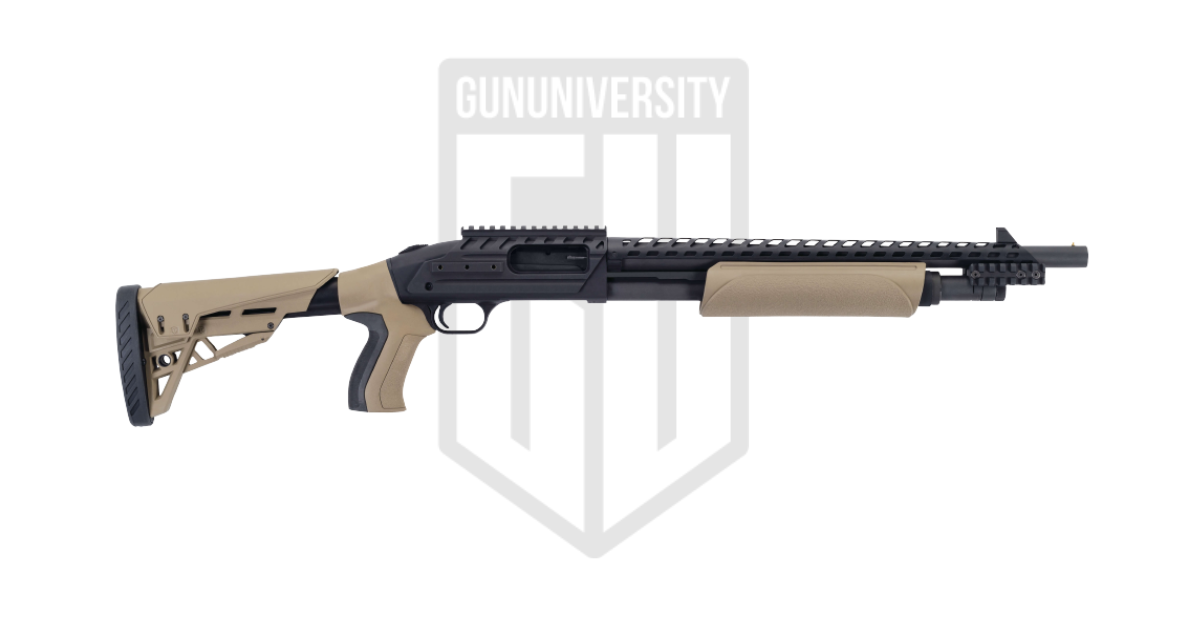

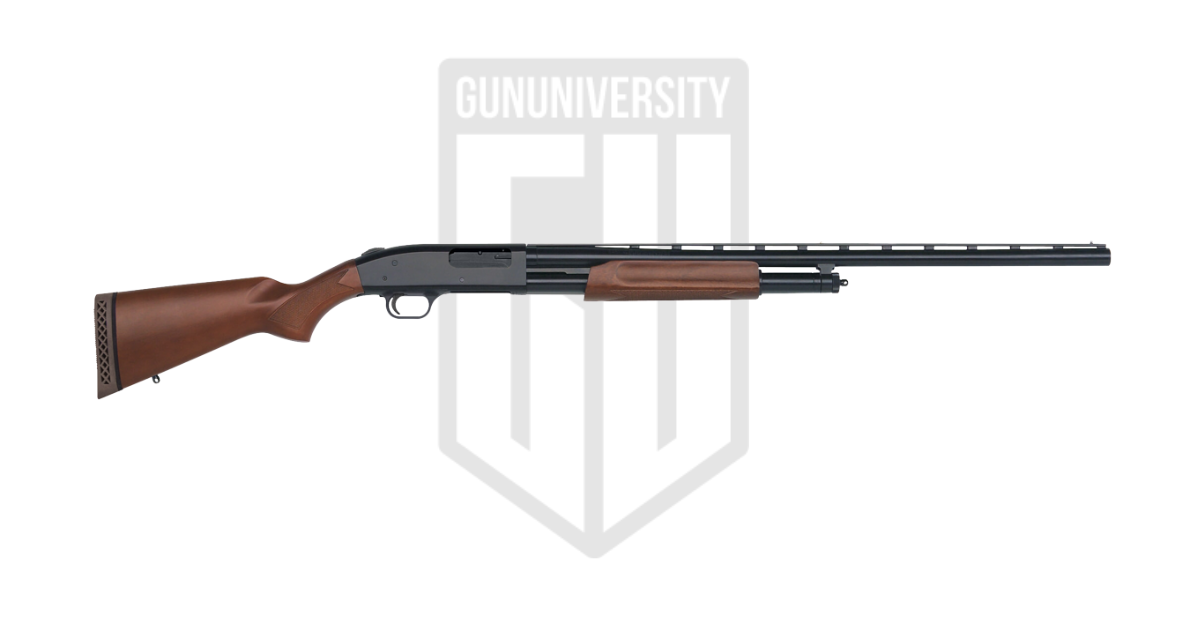
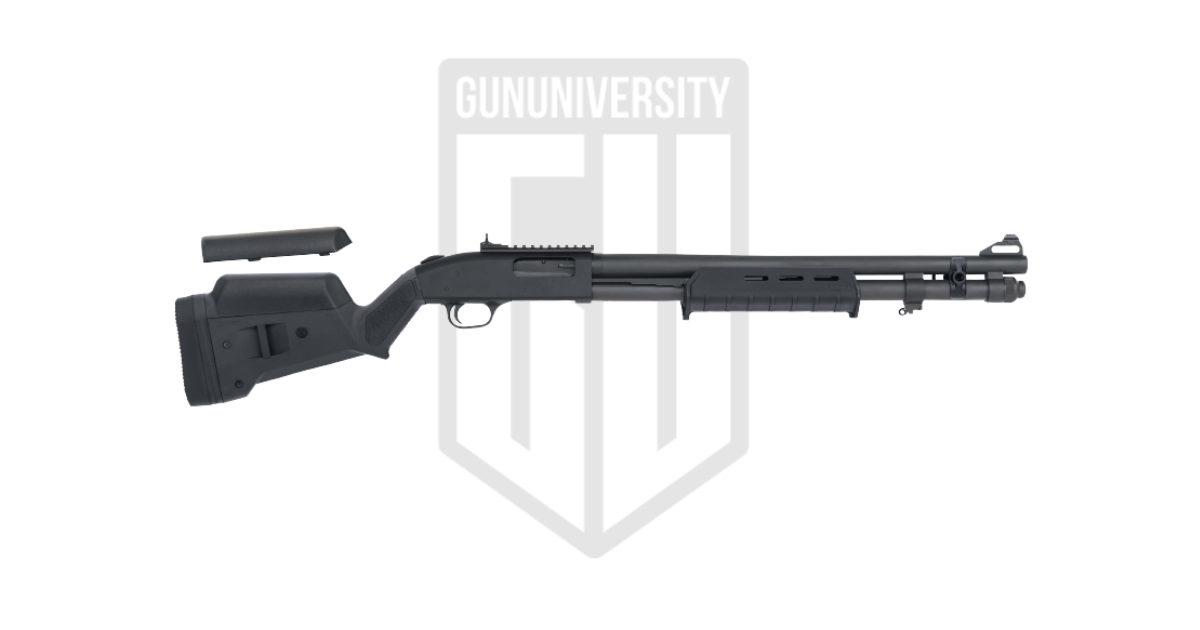
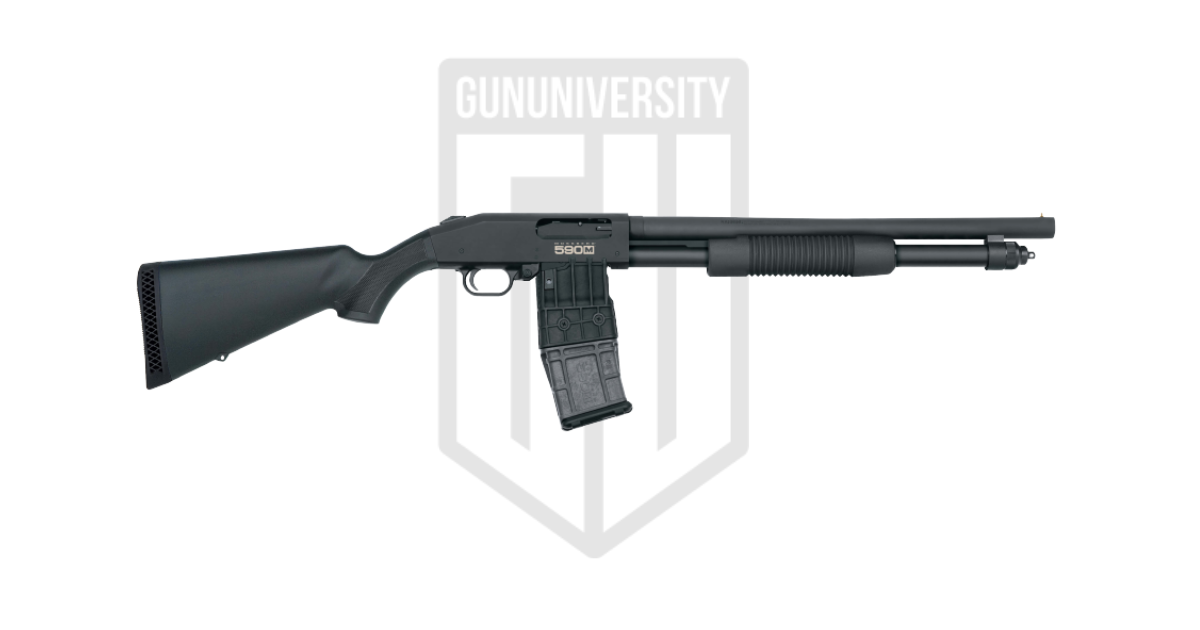
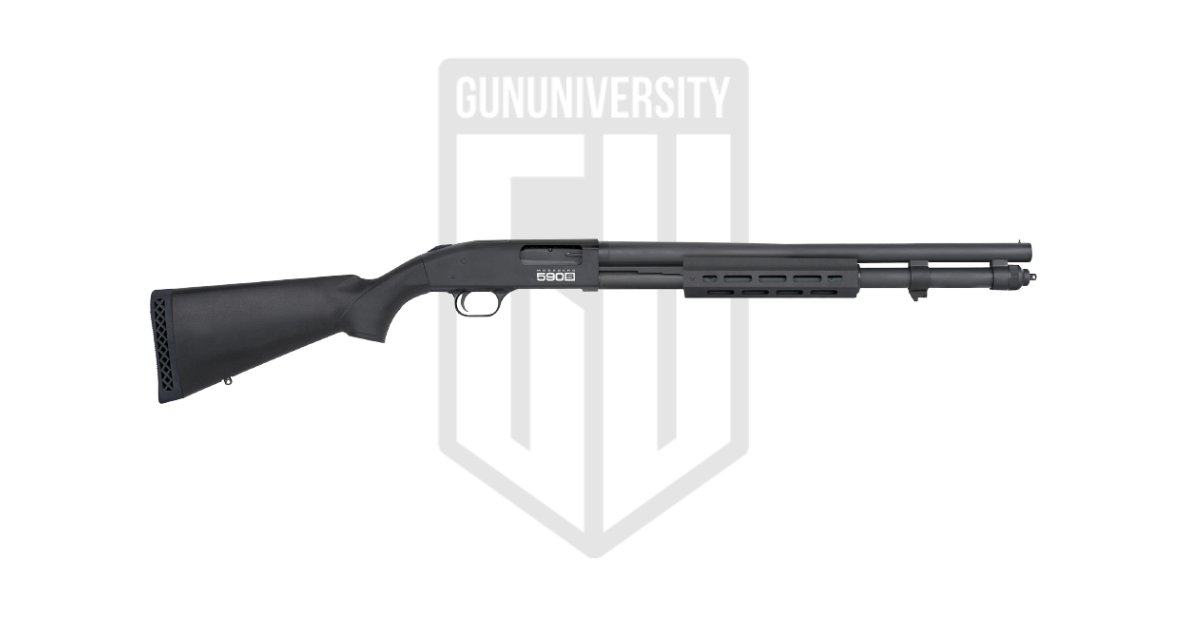

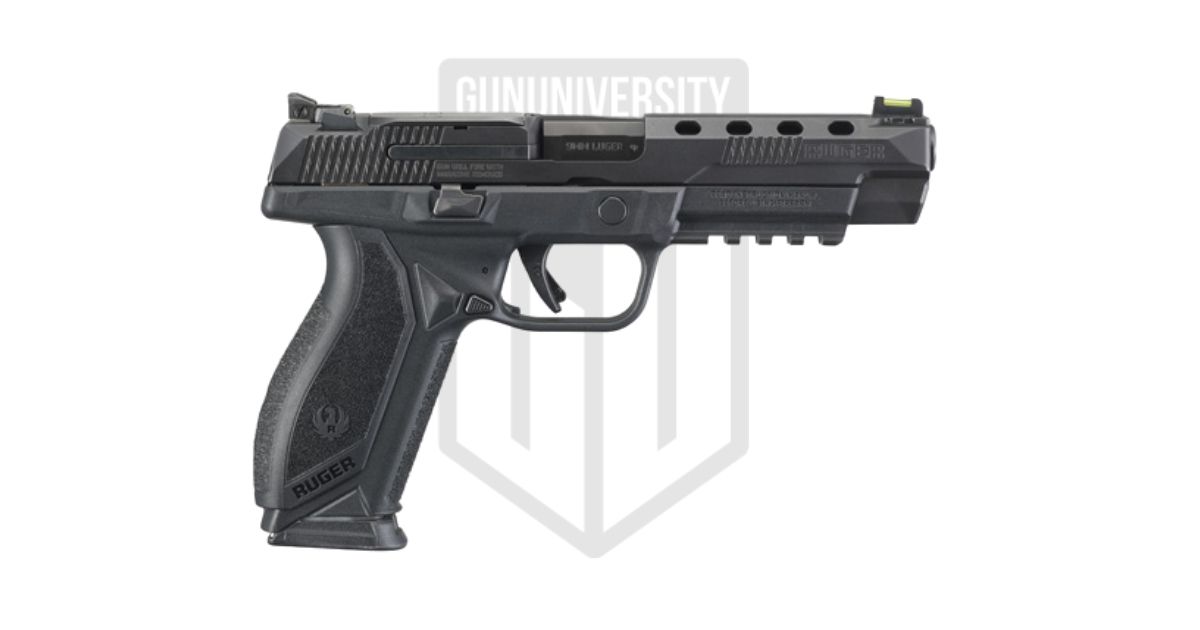
![Best Shooting Ear Protection for 2025 [Range-Tested!]](https://gununiversity.com/wp-content/uploads/2021/09/best-shooting-hearing-protection.jpg)
![Best 9mm Pistols [2025]: Ranked by Size & Use](https://gununiversity.com/wp-content/uploads/2021/09/Best-9mm-featured-1.jpg)